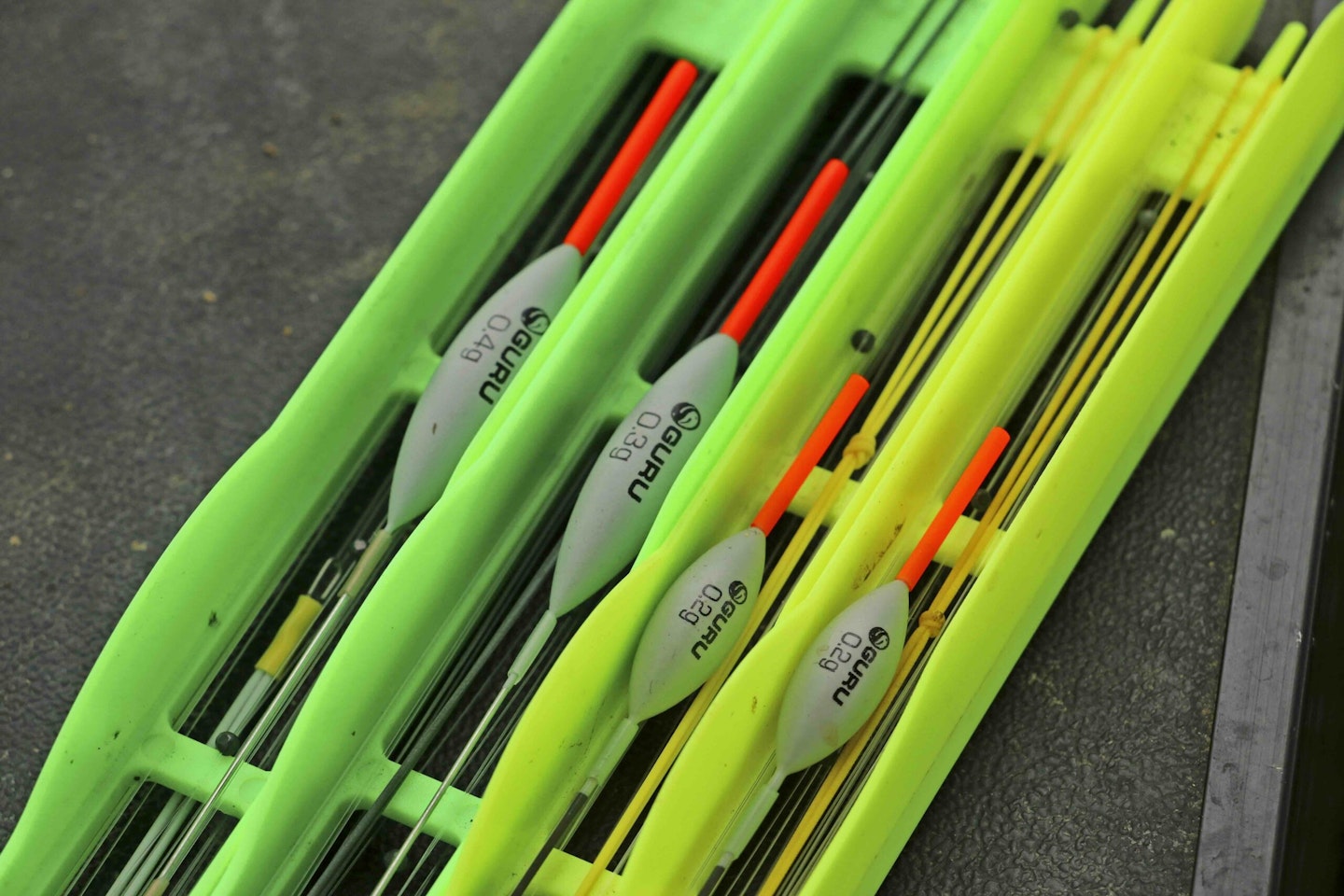On these narrow strips of water, the fish have very little space to push out into, so they back off into empty swims that are out of reach, and don’t return. This is especially the case when there is lots of room on the lake and nothing in terms of features in your swim to hold them, or that they can hide under.
Starting point
Ideally, I’d want to kick off my session directly in front of me and go across to the far bank. How far across you go depends on what you have opposite. If it’s a big reedbed with 3ft of water against it, then it’s there! However, if it’s bare bank and 8ins of water tight over then I’d drop down the shelf into 2ft 6ins. Once temperatures really plummet, fish won’t want to sit in very shallow water with no cover.
You may wonder why I don’t start shorter, but these fish are easily spooked right now. No matter how quietly you set up, they’ll detect your presence and push over.
THE BEST FISHING POLES WILL IMPROVE YOUR PRESENTATION TO HELP YOU CATCH MORE FISH.

Deadly tactic
I won’t feed anything on this line to start. Dobbing will be the tactic that I rely on. Using a 6mm or 8mm piece of punched bread, I’ll aim to work out what is in my swim from the off. If bread isn’t allowed, a single grain of corn, or maggots, will do the job.
If I catch straight away then great, as I can then follow the carp or f1's up and down the far bank to try and keep picking them off. It’s important not to chase them too early, as you then risk pushing them out of range and even into someone else’s swim if you’re in a match. So, while having to chase them is inevitable, try and do it patiently.
This can mean that you must accept catching slower, safe in the belief that you’ll catch consistently for the duration.
IF YOU WANT TO FISH A SNAKE LAKE, TRY ONE OF THESE EXCELLENT VENUES FOR SOME BITES.

Plan B
Dobbing is a brilliant tactic if you already have fish in front of you, but if the area seems devoid at the start, a rethink is needed if you go 20 minutes without any signs. I’ll still stick to fishing over to the far bank, but start trickling a little bit of bait in to try and spark a response.
Maggots are awesome if nuisance silvers aren’t an issue. I’ll tap in six to eight maggots every two minutes just to see if bait falling through the water gets a response. If after 20 minutes I haven’t had one, I’ll start to think about opening new swims to my left and right. If there aren’t many carp in front of me, then it’ll be what I call a ‘trap setting’ day.
SIT COMFORTABLY BY USING ONE OF THE BEST FISHING SEATBOXES FROM OUR BUYER'S GUIDE.

Set a trap
This basically means plumbing up long to both the left and right. If room allows, I’ll then feed very small amounts of bait and alternate between the two swims. I’m talking about fishing at 14.5m to try and get in touch with the carp and f1's that are sat in the gaps. In this situation wetted-down 2mm pellets and corn are a great combination, especially if the water is clear.
If no bite comes within five minutes, I’ll switch sides to rest a line. I won’t feed again until I either catch a fish or have signs that I’ve had one in the swim.
STAY WARM AND DRY THIS WINTER WITH THE BEST FISHING WATERPROOFS!

Talking rigs
Light floats are key in the cold, and when fishing in 3ft of water I will use a 0.2g Guru MW wire-stemmed Bobby. Wire sits up quicker and gives that little bit more stability than carbon. Line choice depends on the size of the fish, but if they are 2lb-6lb fish my mainline will be 0.17mm N-Gauge to a 6ins hooklength of 0.13mm in the same material. Hook is a size 16 Super LWG.
Shotting is a loosely-strung bulk of No11 shot, with the bottom one 6ins from the hook and the rest spaced at one-inch intervals above this. When the water is clear, I feel visibility is important, in that a carp should see the hookbait fall and then follow it down.
ELASTIC CHOICE IS IMPORTANT TO LAND EVERYTHING YOU HOOK! OUR GUIDE TO POLE ELASTIC WILL HELP YOU!

